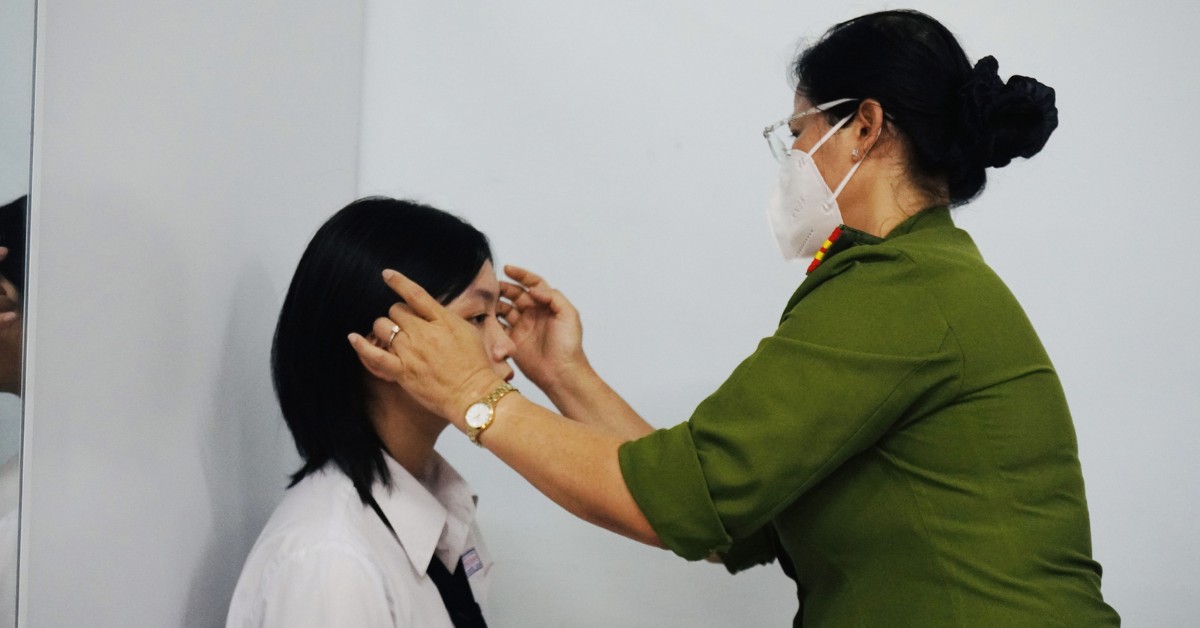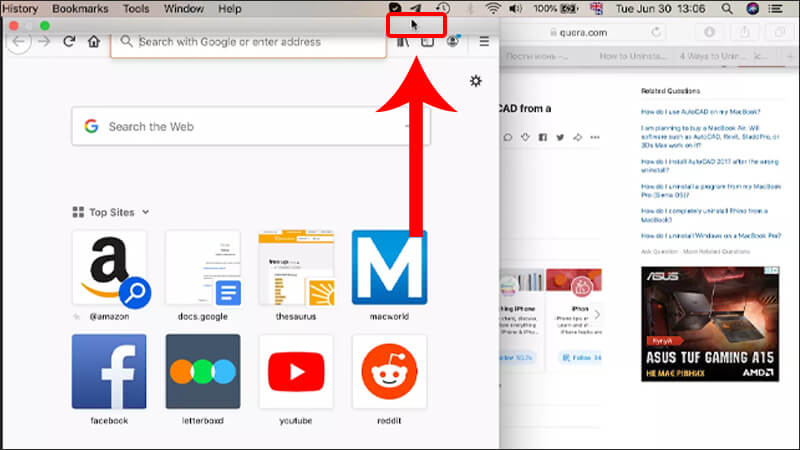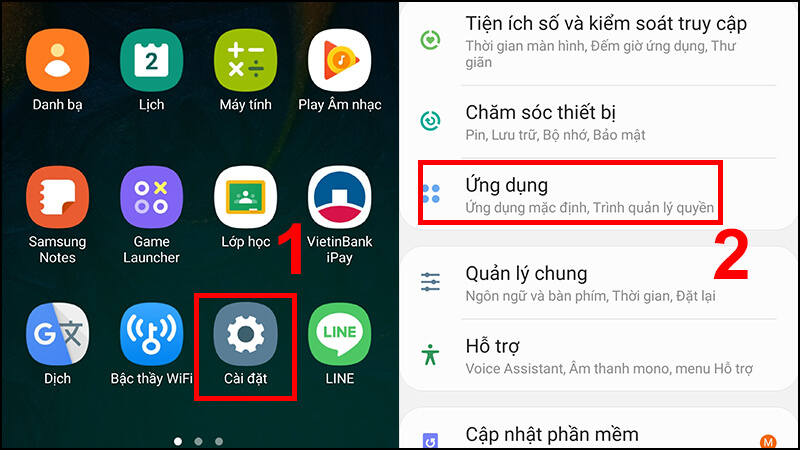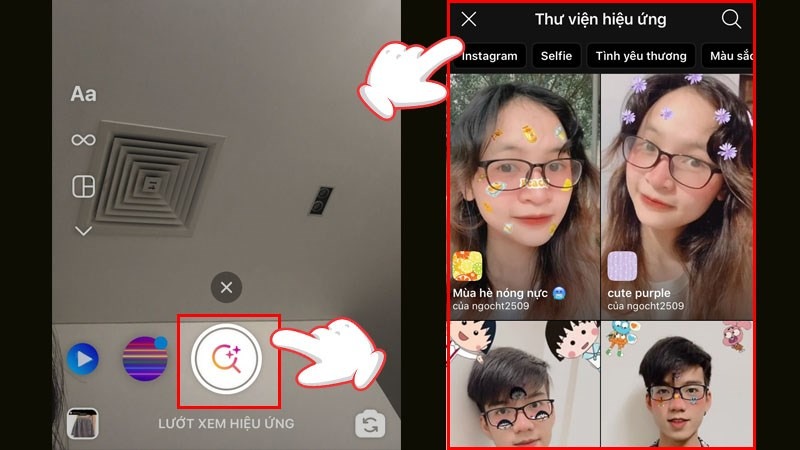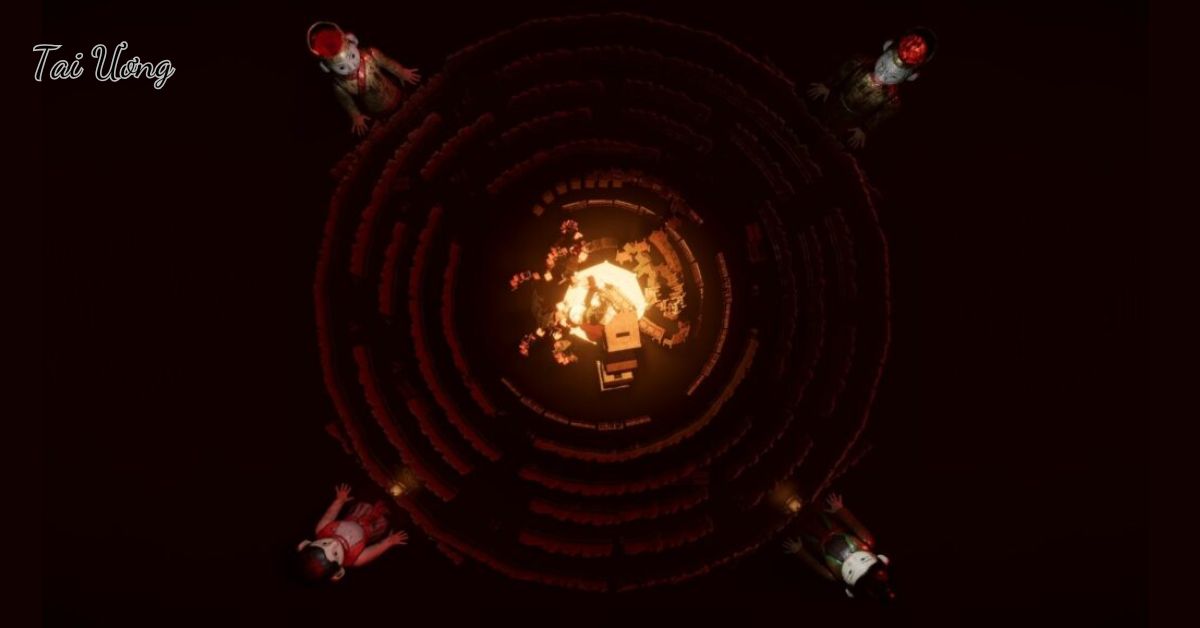Citizen identification card (CCCD) plays an important role in each person’s life, it is the “image” representing personal identity. Therefore, owning a beautiful and valid CCCD photo not only contributes to creating a good impression but also ensures the legality of transactions and administrative procedures. So, the standard for taking ID photo How? Is a bright smile or a serious expression more suitable? Today’s article by Hoang Ha Mobile will answer all your questions about this issue, helping you get the most standard CCCD photo.
What is a citizen identification card?
Citizen identification card is the only legal identification document in Vietnam, used to carry out administrative and civil transactions such as birth registration, death registration, marriage registration, divorce, etc. Possessing a citizen identification card helps you have the basis to enjoy full social and security benefits including health insurance, social insurance, subsidies, etc. And the citizen identification photo is also associated with the responsibility to fulfill civic obligations such as paying taxes, participating in elections, protecting the Fatherland, etc.
Bạn đang xem: Tiêu chuẩn với ảnh chân dung trên thẻ căn cước công dân

From January 1, 2023, the national identity card (ID) will no longer be valid and will be completely replaced by the citizen identification card (CCCD). The change from ID card to CCCD marks an important step forward in state management of population. The new CCCD card has a modern design, integrated with electronic chips and QR codes, helping to enhance security, prevent counterfeiting, and facilitate information lookup and online transactions.
Regulations when taking citizen identification photos
Citizen ID card photo – a “companion” that has been with every Vietnamese citizen for many years. However, not everyone has a satisfactory ID photo due to reasons such as bad shooting angle, awkward expression or lack of confidence. So how to have a “beautiful as a flower” ID photo? Let’s explore the following secret:
Citizen ID photo requirements
According to the provisions of Article 2 of Decree 05/1999/ND-CP and Section II.1.b of Circular 04/1999/TT-BCA on identity card photos, portrait photos when making citizen identification cards must meet the following requirements:
About size and color:
- Photo must be color photo 3x4cm in size.
- Taken on white background.
About posture and clothing:
- Citizens need to take a photo from the front, clearly showing the face and ears.
- When taking photos, citizens must leave their heads bare, sit upright, and wear polite clothing.
- Avoid wearing costumes that show your profession such as police, military, doctor, etc.
Regarding other requirements:
- Do not wear glasses (glasses, contact lenses).
- Hair neat, no face covering.
- White background, no fancy patterns or designs.
- Photos must be clear, not blurred, fuzzy, or scratched.
- Photos must be taken in full light, without glare or shadows.

Note that portrait photos taken when making citizen identification cards cannot be edited, such as facial retouching, hair color, eye color, etc. Citizens can take their own photos or go to the police station to have their photos taken in accordance with regulations. When submitting an application for a citizen identification card, citizens must provide 2 portrait photos taken in accordance with regulations.
Dress and demeanor requirements
To ensure seriousness, politeness and compliance with the regulations of the Ministry of Public Security, when taking citizen identification photos, you need to pay attention to the following clothing:
Skin: You should choose polite, elegant clothes that are in accordance with Vietnamese customs. Avoid wearing clothes that are too revealing, offensive or frivolous such as tank tops, crop tops, short skirts, ripped pants, etc. Men should wear formal shirts, trousers or khakis. Women can wear shirts, long dresses combined with trousers or long skirts. You should choose neutral colors such as white, avoid wearing clothes with flashy patterns or too bright colors.
Manners: You should remove cumbersome jewelry such as large earrings, large necklaces, large bracelets, etc. Tie your hair neatly or let it loose naturally, avoid letting your hair cover your face or get messy. For women, you can apply light makeup, draw eyebrows and lipstick to make your face look fresher and brighter. When taking photos, you need to sit seriously, relax your shoulders, and look straight into the camera lens.

Who is eligible for a citizen identification card?
Regarding the age for issuing and changing cards, the 2014 Citizen Identification Law specifically stipulates as follows:
Xem thêm : 0979 là mạng gì? Khám phá ý nghĩa đặc biệt của số 0979 chi tiết nhất
Age to be granted Citizen Identification Card: Vietnamese citizens aged 14 and over are issued citizen identification cards (Clause 1, Article 19) and children under 14 years old are issued citizen identification cards with chips upon request (Clause 2, Article 19).
Age to change Citizen ID card: Citizens aged 25, 40 and 60 must change their citizen identification cards (Article 21).
Special case: Citizen identification cards issued, changed or reissued within 02 years before the prescribed age are still valid until the next card change age (Article 21).
For example:
- Citizens born on January 1, 1998 will be issued their first citizen identification card on January 1, 2013 (14 years old).
- Citizens born on January 1, 1998 must change their citizen identification card for the first time on January 1, 2023 (25 years old).
- Citizens born on January 1, 1998 must change their citizen identification card for the second time on January 1, 2038 (40 years old).
- Citizens born on January 1, 1998 must change their citizen identification card for the third time on January 1, 2058 (60 years old).

Note that regulations on the age of issuance and renewal of citizen identification cards may change over time. Therefore, you should update the latest information from the competent authorities. Renewal of citizen identification cards must be carried out in accordance with the provisions of law.
Which competent authority is authorized to issue citizen identification cards?
According to current Vietnamese law, the competent authority to issue citizen identification cards is:
Head of the citizen identification management agency of the Ministry of Public Security: Specifically, the Department of Administrative Police for Social Order (C06) under the Ministry of Public Security. Responsible for organizing and implementing citizen identification management nationwide; issuing, exchanging, and reissuing citizen identification cards for Vietnamese citizens; managing, storing, and using citizen identification information.
Citizen identification management agency of the Public Security of provinces and centrally-run cities: Specifically, the Department of Administrative Police for Social Order (PC06) under the Public Security of provinces and centrally-run cities. Carry out the work of managing citizen identification cards in the province or city; issue, change, and reissue citizen identification cards to Vietnamese citizens residing in the area; coordinate with the Department of Administrative Police for Social Order in the work of managing citizen identification cards.
Citizen identification management agency of district, county, town, city police under province, equivalent administrative unit: Carry out citizen identification management in districts, towns, cities; issue, change, and reissue citizen identification cards to Vietnamese citizens residing in the area; coordinate with the Police Department for administrative management of social order in citizen identification management.

Questions related to making citizen identification cards
Are you wondering about the process of making a citizen identification card (CCCD)? Worried about complicated procedures or having difficulty preparing documents and portrait photos? Don’t worry, in the following content, we will explore and answer all common questions when making a CCCD, helping you complete the procedure quickly and conveniently.
Can I let my hair down when taking my ID photo?
According to current regulations of the Ministry of Public Security of Vietnam, there is no regulation prohibiting loose hair when taking citizen identification card photos. However, to ensure a beautiful and valid CCCD photo, hair should be neatly combed, not covering the forehead, ears and cheeks. You should tie your hair up or let it loose naturally, avoid messy hair or covering the face. Dyeing your hair in bright colors does not affect the taking of CCCD photos. However, you should choose a hair color that matches your face and outfit so that the photo is the most beautiful and natural. Avoid dyeing your hair in colors that are too bright or outstanding, making it difficult to identify your face.

In short, you can absolutely let your hair down when taking a CCCD photo, as long as your hair is neatly combed, does not cover your face, and does not use cumbersome accessories.
Can I smile when taking a CCCD photo?
There is no regulation prohibiting smiling when taking a citizen identification photo, but to ensure a beautiful and valid CCCD photo, you should smile gently and naturally to show your face clearly and easily. Avoid smiling too brightly or showing your teeth, because it can partially obscure your face and make identification difficult. In addition, although smiling is not prohibited, you should keep a serious face to show solemnity and suit the purpose of using the CCCD card. Avoid making other expressions such as grimacing, frowning, pouting, etc. because it can affect the quality of the photo.

What information does a citizen identification photo contain?
The Citizen Identification Card (CCCD) plays an important role in identifying each Vietnamese citizen. In addition to its main function as an “identity card”, the CCCD also contains a lot of important personal information, which is encrypted and securely stored in an electronic chip. So what information does the CCCD card include?
Basic information: National emblem, Full name, Date of birth, Gender, Nationality, Ethnicity, Hometown, Permanent residence, Portrait.
Information about CCCD card: ID card number, Date of issue, Expiry date, Issuing authority.
Additional information: Identification features, Fingerprint.
QR Code: The front of the CCCD card is integrated with a QR code, containing all the information printed on the card and some other additional information. This QR code can be scanned with a smartphone to verify the cardholder’s information.
Chip: The back of the CCCD card has an integrated chip with large storage capacity, enough to store all the basic personal information of the cardholder.

What types of documents can CCCD integrate?
Currently, the chip-embedded Citizen Identification Card (CCCD) can integrate the following types of documents:
- Health insurance card: Health insurance card information will be stored in the CCCD chip, helping people conveniently look up information and use medical services without having to carry a physical health insurance card.
- Driving license: Driver’s license information will be stored in the CCCD chip, helping people easily present their driver’s license when participating in traffic.
- Registration book: Information about citizens’ permanent residence will be integrated into the CCCD chip, replacing paper household registration books.

The integration of documents into the CCCD chip is being implemented in stages. People need to update the latest information from the authorities to know which documents can be integrated into the CCCD chip. With diverse features, the CCCD chip is increasingly becoming an essential tool in the social life of every Vietnamese citizen.
Can I wear national or religious costumes when taking my ID photo?
Vietnamese law shows a high level of respect for each individual’s culture and beliefs. This is clearly demonstrated in the regulations on clothing when taking citizen identification photos.

Citizens of religious and ethnic backgrounds are still allowed to wear religious or ethnic costumes when taking ID photos. In case of wearing a head scarf, they are still allowed to keep the head scarf when taking photos, but the face and ears must be clearly captured. The standards for clothing when taking ID photos are implemented uniformly nationwide, ensuring fairness and equality for all citizens. Similar to the regulations on clothing, there are no specific restrictions on makeup or hair dyeing when taking ID photos. However, it is advisable to keep the makeup light and natural to ensure the face is clear and easily identifiable.
Epilogue
In addition to the standards for taking citizen identification photos that Hoang Ha Mobile has compiled, through this article we also want to convey the need to raise awareness about the importance of citizen identification. Be proactive in changing to a new citizen identification card to fully enjoy the benefits and fulfill your responsibilities. In addition, citizen identification is an important personal asset that needs to be carefully preserved. When you discover that your citizen identification card is damaged, lost or has necessary information changed, you must go to the police station to promptly complete the procedures for a new one.
SEE MORE:
Nguồn: https://tuyengiaothudo.vn
Danh mục: Khám phá
